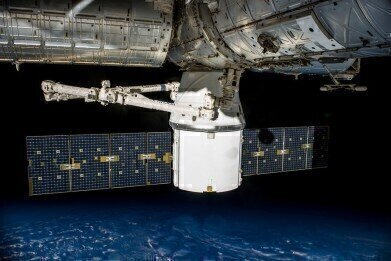Gas Detection
NASA Discovers 39 Unreported Sources of Sulphur Dioxide Pollution
Jul 07 2016
A team of scientists and researchers from NASA and several other bodies have used a new method of emissions monitoring to pinpoint 39 heretofore undiscovered sources of sulphur dioxide pollution. The technique relies on the collection of data from various satellites in the stratosphere and its subsequent interpretation by a new advanced computer programme.
Chief among the countries responsible for these rogue emissions were Russia, Mexico and several nations in the Middle East.
Quantifying sulphur dioxide emissions paramount to avoiding air pollution
As a known contributor to acid rain and a creator of particulate matter, sulphur dioxide (SO2) is regulated by the Environmental Protection Agency (EPA) in the US and by most regulating bodies around the world. SO2 is normally emitted from fossil fuel-burning power plants, incineration plants and smelters across the globe.
However, in order to effectively assess how much SO2 is being emitted from any given source, the whereabouts of that source must first be ascertained. Teaming up with Environment and Climate Change Canada, the University of Maryland and the University of Dalhousie, NASA were able to use satellite imaging to detect streams of SO2 coming from 39 sources that had not declared they were emitting the toxic substance.
“We now have an independent measurement of these emission sources that does not rely on what was known or thought known,” explained Chris McLinden, lead author of the study which was published in the journal Nature Geosciences. “When you look at a satellite picture of sulphur dioxide, you end up with it appearing as hotspots – bull’s eyes, in effect – which makes the estimates of emissions easier.”
A huge amount of unrecorded pollution
The 39 offending sources of pollution fell mostly in the Middle East, but also in Mexico and Russia. Furthermore, there were other known sources in the same areas which had reported significantly lower levels of pollution than that found by the satellite images.
Indeed, when the unreported sources and the underreported amounts from known sources were added together, they comprised 12% of all SO2 emissions worldwide. Such a huge discrepancy between known and actual values represents a substantial difference in air quality, potentially causing severe respiratory and cardiovascular problems for humans breathing in the toxins.
The study also was able to identify 75 natural sources of SO2 emissions. These were generally dormant volcanoes that slowly released the gas over time, thus contributing a small but steady stream to the growing amount of SO2 in the atmosphere. Though these volcanoes were known about already, the study is the first accurate and comprehensive survey of the amount of SO2 they are releasing.
“The unique advantage of satellite data is spatial coverage,” commented Brian Duncan, who works at the Goddard Space Flight Centre in Maryland. “This paper is the perfect demonstration of how new and improved satellite datasets, coupled with new and improved data analysis techniques, allow us to identify even smaller pollutant sources and to quantify these emissions over the globe.”
Digital Edition
IET 34.2 March 2024
April 2024
Gas Detection - Biogas batch fermentation system for laboratory use with automatic gas analysis in real time Water/Wastewater - Upcycling sensors for sustainable nature management - Prist...
View all digital editions
Events
Apr 30 2024 Melbourne, Australia
Apr 30 2024 Birmingham, UK
May 03 2024 Seoul, South Korea
May 05 2024 Seville, Spain
May 06 2024 Minneapolis, MN, USA


















